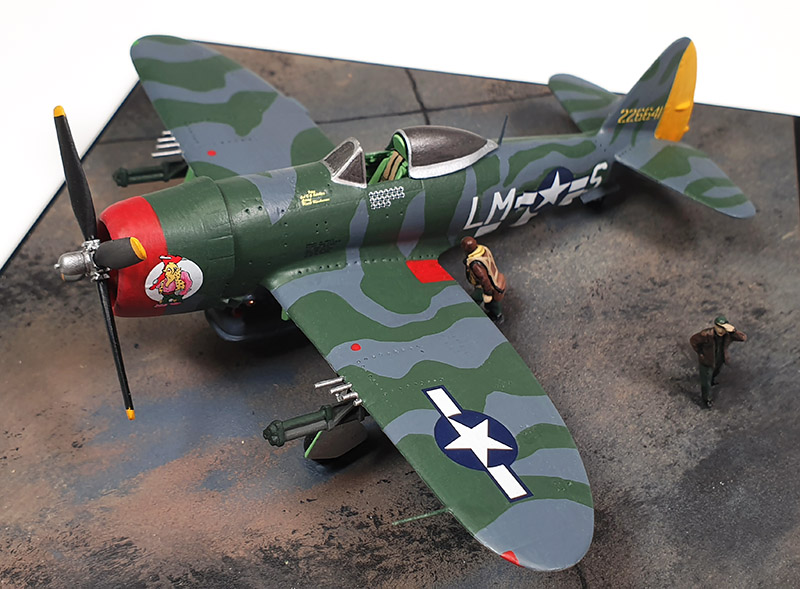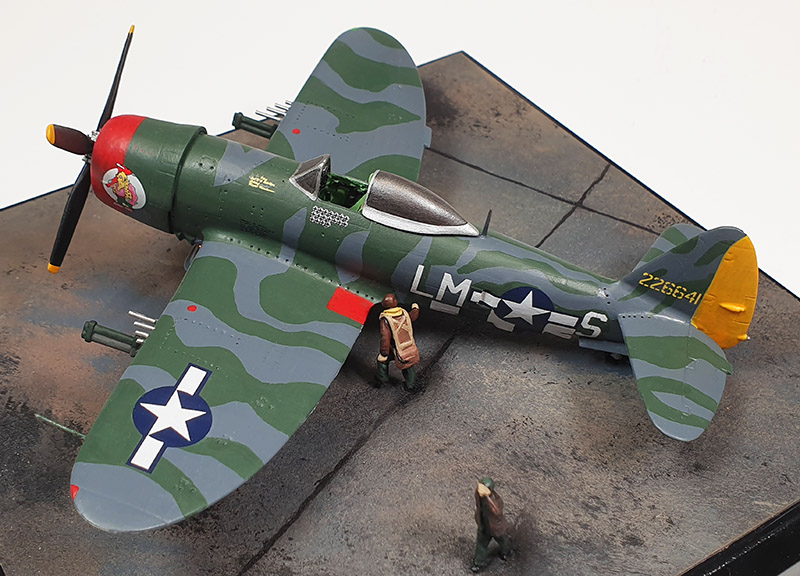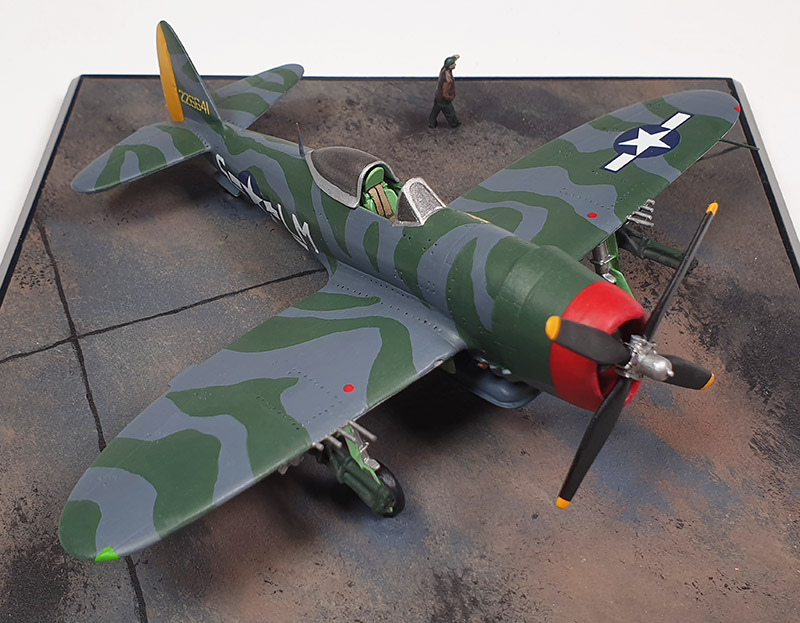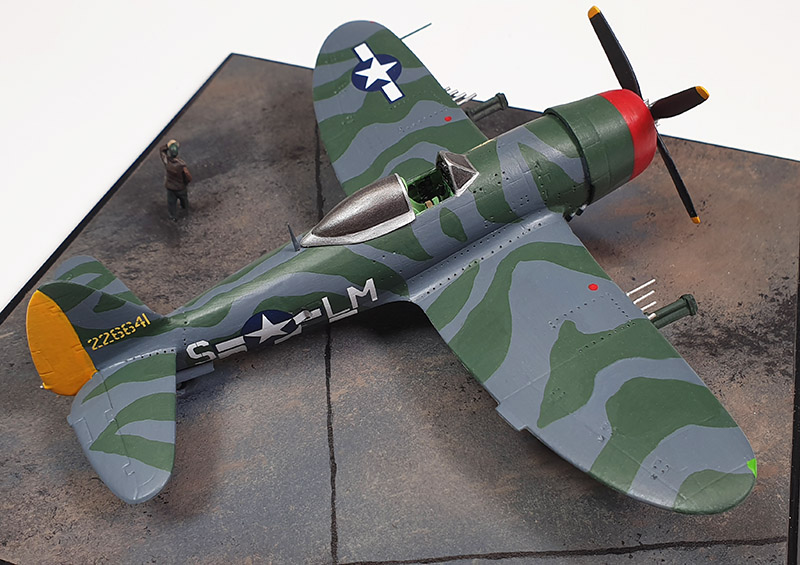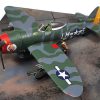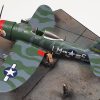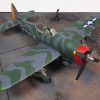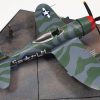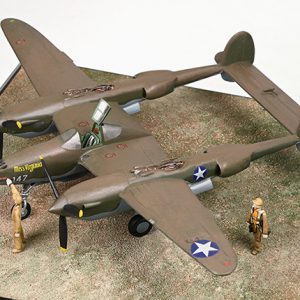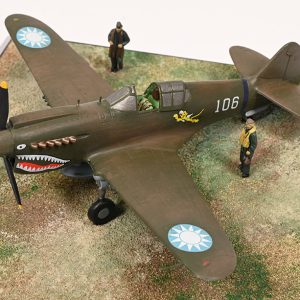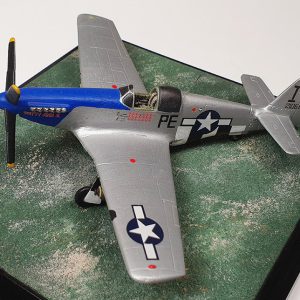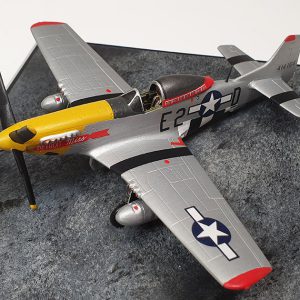Republic P-47D Thunderbolt 42-26641 LM-S “Hairless Joe”
56th Fighter Group, Col. David Schilling, Boxted, December 1944.
The 56th Fighter Group arrived in England in January 1943 under the command of Colonel Hubert Zemke, who was to remain at its head for most of the rest of the war in Europe. Its first airfield was King’s Cliffe; its first Republic P-47D Thunderbolts arrived by the end of the month, and it was the one Group in VIII Fighter Command to keep Republic’s heavyweight until the end of the conflict. At the beginning of April the Group moved to Horsham St.Faith near Norwich, and on 8th April Col. Zemke led the unit’s first operation as part of a combined sweep of the Pas de Calais with P-47s from the other two Thunderbolt groups. He led three other aircraft of 62nd FS, one of the pilots that flew the mission being the squadron CO Major David Schilling; with the 61st and 63rd this squadron remained part of the Group until 1945, and indeed are to this day the three are part of the 56th Fighter wing, USAF, the direct descendant of “Zemke’s Wolfpack”. 42-26641 was the sixth of Schilling’s seven Thunderbolts, and carrying like several of his others nose art of the Dogpatch character “Hairless Joe” was the one in which on 23rd December 1944 he shot down five enemy aircraft, one of the few examples of an “Ace in a Day”. He had succeeded Zemke as 56th Group Commander in August and left at the end of January for a headquarters post; he finished with 22.5 recorded victories. The group had begun to use different camouflage finishes for each of its three squadrons after D-Day, and different coloured rudders; this “Hairless Joe” carries the LM codes of the 62nd and its yellow rudder even though it was the Group CO’s aircraft, and Schilling’s mounts wore the individual letter S. An “extra” and large star-and-bar was carried under the port wing, an identification measure applied early in P-47D Thunderbolt service in Europe when it was otherwise assumed than any radial-engined fighter was an Fw 190. This one was declared “war-weary” on 3 January 1945, having flown fifty-five combat missions. David C Schilling remained in the air force after the war, and returned to the 56th FG as CO. He led sixteen of the Group’s F-80 Shooting Stars to Europe in July 1948 to demonstrate at the time of the Berlin Airlift the service’s ability to reinforce its combat units by air, the first west-to-east crossing by jet fighters, just ten days after six Vampires of 54 Squadron RAF had made the first east-to-west flight. He was back in England as Inspector-General of SAC’s 7th Air Division when he was killed in a car crash, between Mildenhall and Lakenheath, in August 1956.


